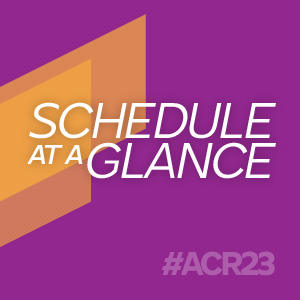Back
Poster Session C
Pain syndromes, fibromyalgia and regional musculoskeletal disorders
Session: (1827–1839) Fibromyalgia & Other Clinical Pain Syndromes Poster
1838: The Burden of Dysautonomia in Patients Suffering from Pathologies Associated with Generalized Joint Hypermobility
Tuesday, November 14, 2023
9:00 AM – 11:00 AM PT
Location: Poster Hall
- RJ
Roland Jaussaud, MD, PhD
Université de Lorraine / CHRU de Nancy
Vandoeuvre Les Nancy, FranceDisclosure information not submitted.
Abstract Poster Presenter(s)
Alizée Perrein1, Fabien Pontille1, Paul Decker2, david Attali3, Thomas Moulinet4 and Roland Jaussaud5, 1Département de Médecine interne et immunologie clinique, Université de Lorraine / CHRU de Nancy, Vandoeuvre-les-Nancy, France, 2Nancy hospital, France, Nancy, France, 3Université Paris Cité, Laboratoire Psychopathologie et Processus de Santé, Boulogne-Billancourt, France, 4Department of Internal Medicine, Centre hospitalier universitaire de Nancy, Nancy, France, 5Département de Médecine interne et immunologie clinique, Université de Lorraine / CHRU de Nancy, Vandoeuvre Les Nancy, France
Background/Purpose: Hypermobility spectrum disorders (HSD) and hypermobile Ehlers Danlos syndrome (hEDS) are among the conditions associated with generalized joint hypermobility (GJH). Alongside myofascial and skeletal pain manifestations, other polymorphic co-morbid manifestations, often multiple, are linked to an autonomic dysregulation syndrome. The aim of this study was to characterize the impact of dysautonomia in patients suffering from joint hypermobility syndrome (HSD/hEDS).
Methods: Incident patients were recruited from consultations at the Center of Competence for Rare Diseases of Non-Vascular EDS. Inclusion criteria were GJH and clinical criteria for hEDS or HSD. Scores on the following questionnaires were collected : SCOPA-AUT (dysautonomia), Nijmegen (hyperventilation), HAD (anxiety, depression), Tampa (kinesiophobia), PSQI (sleep), Gastro-Intestinal Quality of Life Index (GIQLI), Pichot (fatigue), VAS physical pain and VAS psychological pain, VAS quality of life. A comparison of the 2 hEDS and HSD groups was carried out, followed by a principal component analysis (PCA). The search of homogeneous groups of patients was carried out using hierachical cluster analysis.
Results: 36 patients were included (18 hEDS, 18 HSD) with a significantly higher level of anxiety-depression in the hEDS group (25.33 vs 18.39, p = 0.017). The Nijmegen score was higher in the hEDS group (46.91 vs 38.94, p = 0.016). The mean SCOPA-AUT score was 37.08 ± 9.86 and did not differ significantly between the 2 groups; there was no statistically significant difference between the 2 groups for the other parameters studied. The level of dysautonomia was correlated with younger age, high Nijmegen score, kinesiophobia, fatigue, sleep disturbance, marked anxiety-depressive syndrome and poor GI QoL. PCA revealed a strong correlation between the level of dysautonomia and GI QoL. Two homogeneous groups of patients were identified : one of which (n = 23) was characterized by very high impairment of GI QoL and a high level of dysautonomia.
Conclusion: Our study illustrates the importance of dysautonomia as a major comorbidity in HSD/hEDS. Dysfunctional breathing seems almost constant, and dysautonomia is associated with a major impairment of GI QoL. An anxiety or depressive disorder is very common in these situations, and supports the recently put forward hypothesis of a neuroconnective phenotype. The polyvagal theory provides important physiological clues for understanding these pathologies and for their therapeutic management.
A. Perrein: None; F. Pontille: None; P. Decker: None; d. Attali: None; T. Moulinet: None; R. Jaussaud: None.
Background/Purpose: Hypermobility spectrum disorders (HSD) and hypermobile Ehlers Danlos syndrome (hEDS) are among the conditions associated with generalized joint hypermobility (GJH). Alongside myofascial and skeletal pain manifestations, other polymorphic co-morbid manifestations, often multiple, are linked to an autonomic dysregulation syndrome. The aim of this study was to characterize the impact of dysautonomia in patients suffering from joint hypermobility syndrome (HSD/hEDS).
Methods: Incident patients were recruited from consultations at the Center of Competence for Rare Diseases of Non-Vascular EDS. Inclusion criteria were GJH and clinical criteria for hEDS or HSD. Scores on the following questionnaires were collected : SCOPA-AUT (dysautonomia), Nijmegen (hyperventilation), HAD (anxiety, depression), Tampa (kinesiophobia), PSQI (sleep), Gastro-Intestinal Quality of Life Index (GIQLI), Pichot (fatigue), VAS physical pain and VAS psychological pain, VAS quality of life. A comparison of the 2 hEDS and HSD groups was carried out, followed by a principal component analysis (PCA). The search of homogeneous groups of patients was carried out using hierachical cluster analysis.
Results: 36 patients were included (18 hEDS, 18 HSD) with a significantly higher level of anxiety-depression in the hEDS group (25.33 vs 18.39, p = 0.017). The Nijmegen score was higher in the hEDS group (46.91 vs 38.94, p = 0.016). The mean SCOPA-AUT score was 37.08 ± 9.86 and did not differ significantly between the 2 groups; there was no statistically significant difference between the 2 groups for the other parameters studied. The level of dysautonomia was correlated with younger age, high Nijmegen score, kinesiophobia, fatigue, sleep disturbance, marked anxiety-depressive syndrome and poor GI QoL. PCA revealed a strong correlation between the level of dysautonomia and GI QoL. Two homogeneous groups of patients were identified : one of which (n = 23) was characterized by very high impairment of GI QoL and a high level of dysautonomia.
Conclusion: Our study illustrates the importance of dysautonomia as a major comorbidity in HSD/hEDS. Dysfunctional breathing seems almost constant, and dysautonomia is associated with a major impairment of GI QoL. An anxiety or depressive disorder is very common in these situations, and supports the recently put forward hypothesis of a neuroconnective phenotype. The polyvagal theory provides important physiological clues for understanding these pathologies and for their therapeutic management.
A. Perrein: None; F. Pontille: None; P. Decker: None; d. Attali: None; T. Moulinet: None; R. Jaussaud: None.



